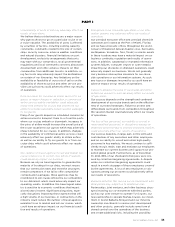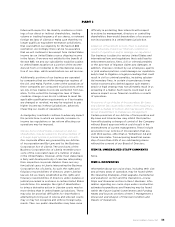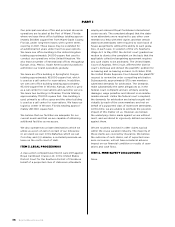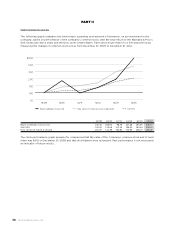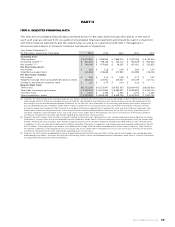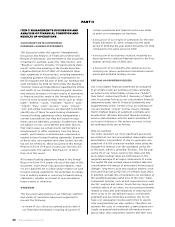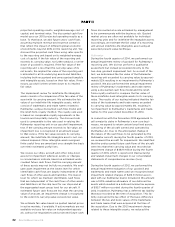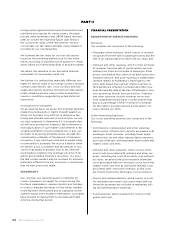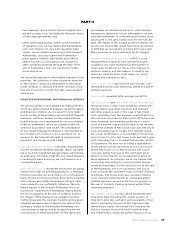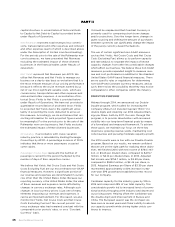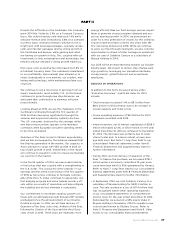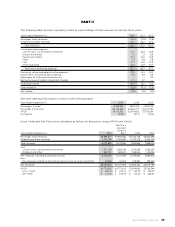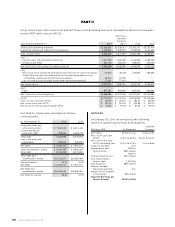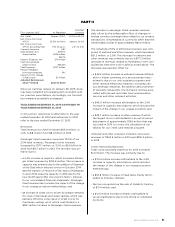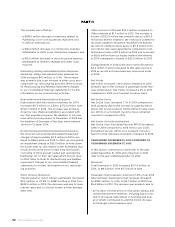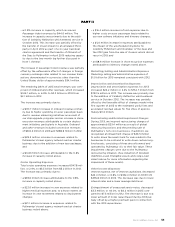Royal Caribbean Cruise Lines 2014 Annual Report Download - page 44
Download and view the complete annual report
Please find page 44 of the 2014 Royal Caribbean Cruise Lines annual report below. You can navigate through the pages in the report by either clicking on the pages listed below, or by using the keyword search tool below to find specific information within the annual report.
Royal Caribbean Cruises Ltd. 43
PART II
deferred tax liability and recorded a deferred tax ben-
efit of $5.2 million during the fourth quarter of 2012.
The net $28.5 million impact of these adjustments was
recognized in earnings during the fourth quarter of
2012 and was reported within Other income (expense)
in our statements of comprehensive income (loss).
Pullmantur is a brand targeted primarily at the Spanish,
Portuguese and Latin American markets, with an
increasing focus on Latin America. The persistent
economic instability in these markets has created sig-
nificant uncertainties in forecasting operating results
and future cash flows used in our impairment analyses.
We continue to monitor economic events in these
markets for their potential impact on Pullmantur’s
business and valuation. Further, the estimation of fair
value utilizing discounted expected future cash flows
includes numerous uncertainties which require our
significant judgment when making assumptions of
expected revenues, operating costs, marketing, selling
and administrative expenses, interest rates, ship addi-
tions and retirements as well as assumptions regarding
the cruise vacation industry’s competitive environment
and general economic and business conditions, among
other factors.
If there are changes to the projected future cash flows
used in the impairment analyses, especially in Net
Yields, or if anticipated transfers of vessels from our
other cruise brands to the Pullmantur fleet do not
take place, it is possible that an impairment charge of
Pullmantur’s reporting unit’s goodwill and trademarks
and trade names may be required. Of these factors,
the planned transfers of vessels to the Pullmantur
fleet is most significant to the projected future cash
flows. If the transfers do not occur, we will likely fail
step one of the goodwill impairment test and record
an impairment loss related to our trademarks and
tradenames. As of December 31, 2014, the carrying
amounts of our goodwill and trademarks and trade
names attributable to our Pullmantur reporting unit
was $133.6 million and $188.0 million, respectively.
Royal Caribbean International
During the fourth quarter of 2014, we performed a
qualitative assessment of the Royal Caribbean Inter-
national reporting unit. Based on our qualitative
assessment, we concluded that it was more-likely-
than-not that the estimated fair value of the Royal
Caribbean International reporting unit exceeded its
carrying value and thus, we did not proceed to the
two-step goodwill impairment test. No indicators
of impairment exist primarily because the reporting
unit’s fair value has consistently exceeded its carrying
value by a significant margin, its financial performance
has been solid in the face of mixed economic environ-
ments and forecasts of operating results generated
by the reporting unit appear sufficient to support its
carrying value. As of December 31, 2014, the carrying
amount of goodwill attributable to our Royal Caribbean
International reporting unit was $287.0 million.
Derivative Instruments
We enter into various forward, swap and option con-
tracts to manage our interest rate exposure and to
limit our exposure to fluctuations in foreign currency
exchange rates and fuel prices. These instruments
are recorded on the balance sheet at their fair value
and the vast majority are designated as hedges. We
also have non-derivative financial instruments desig-
nated as hedges of our net investment in our foreign
operations and investments. The fuel options we
entered into represent economic hedges which were
not designated as hedging instruments for accounting
purposes and thus, changes in their fair value were
immediately recognized in earnings. Although certain
of our derivative financial instruments do not qualify
or are not accounted for under hedge accounting, we
do not hold or issue derivative financial instruments
for trading or other speculative purposes. We account
for derivative financial instruments in accordance with
authoritative guidance. Refer to Note 2. Summary of
Significant Accounting Policies and Note 14. Fair Value
Measurements and Derivative Instruments to our con-
solidated financial statements under Item 8. Financial
Statements and Supplementary Data for more informa-
tion on related authoritative guidance, the Company’s
hedging programs and derivative financial instruments.
We enter into foreign currency forward contracts
and collars, interest rate, cross-currency and fuel
swaps and options with third-party institutions in
over-the-counter markets. We estimate the fair value
of our foreign currency forward contracts and interest
rate and cross-currency swaps using expected future
cash flows based on the instruments’ contract terms
and published forward prices for foreign currency
exchange and interest rates. We apply present value
techniques and LIBOR-based discount rates to con-
vert the expected future cash flows to the current fair
value of the instruments.
We estimate the fair value of our foreign currency
collars using standard option pricing models with
inputs based on the options’ contract terms, such
as exercise price and maturity, and readily available
public market data, such as foreign exchange prices,
foreign exchange volatility levels and discount rates.
We estimate the fair value of our fuel swaps using
expected future cash flows based on the swaps’ con-
tract terms and forward prices. We derive forward
prices from forward fuel curves based on pricing
inputs provided by third-party institutions that trans-
act in the fuel indices we hedge. We validate these


